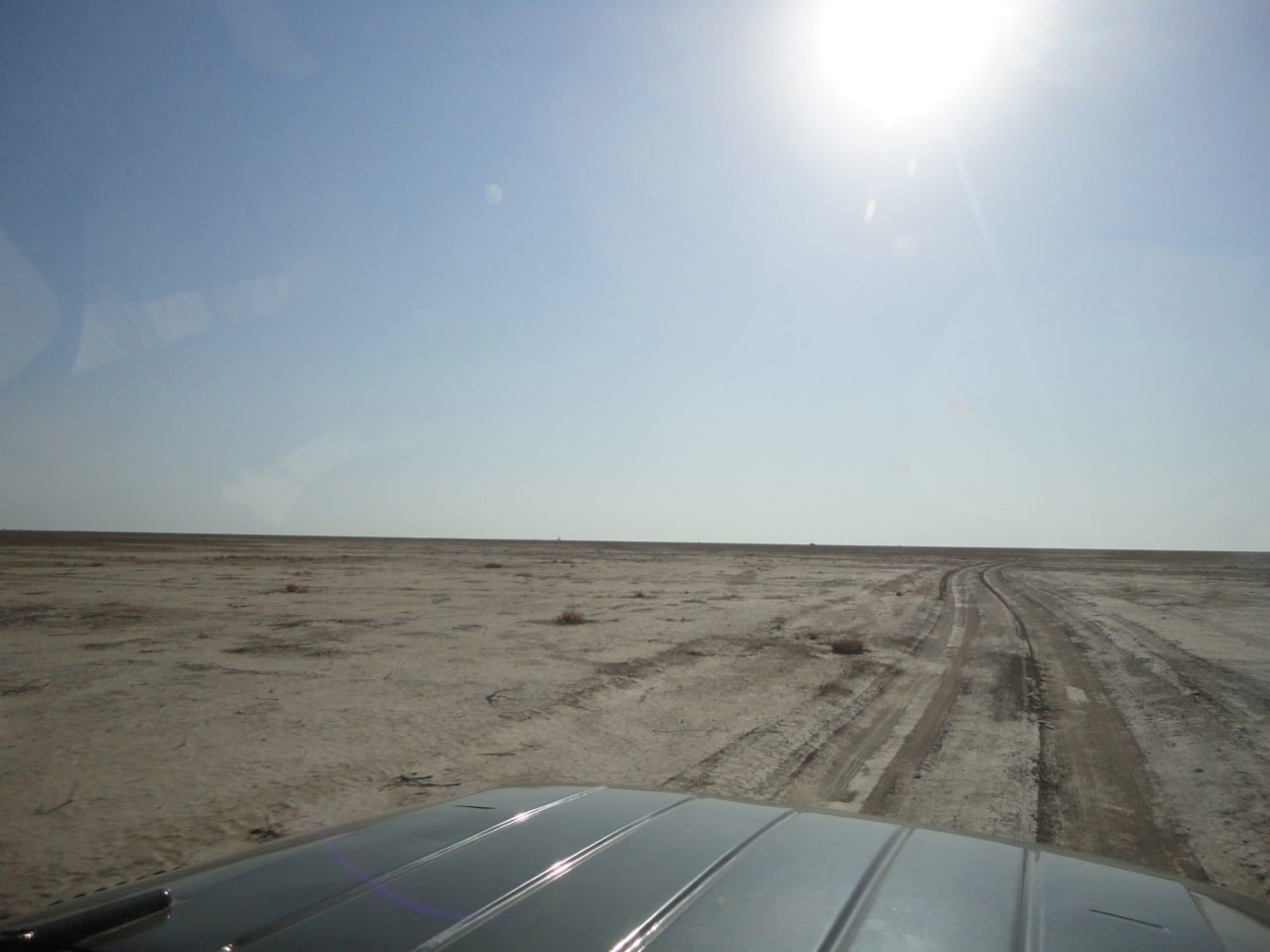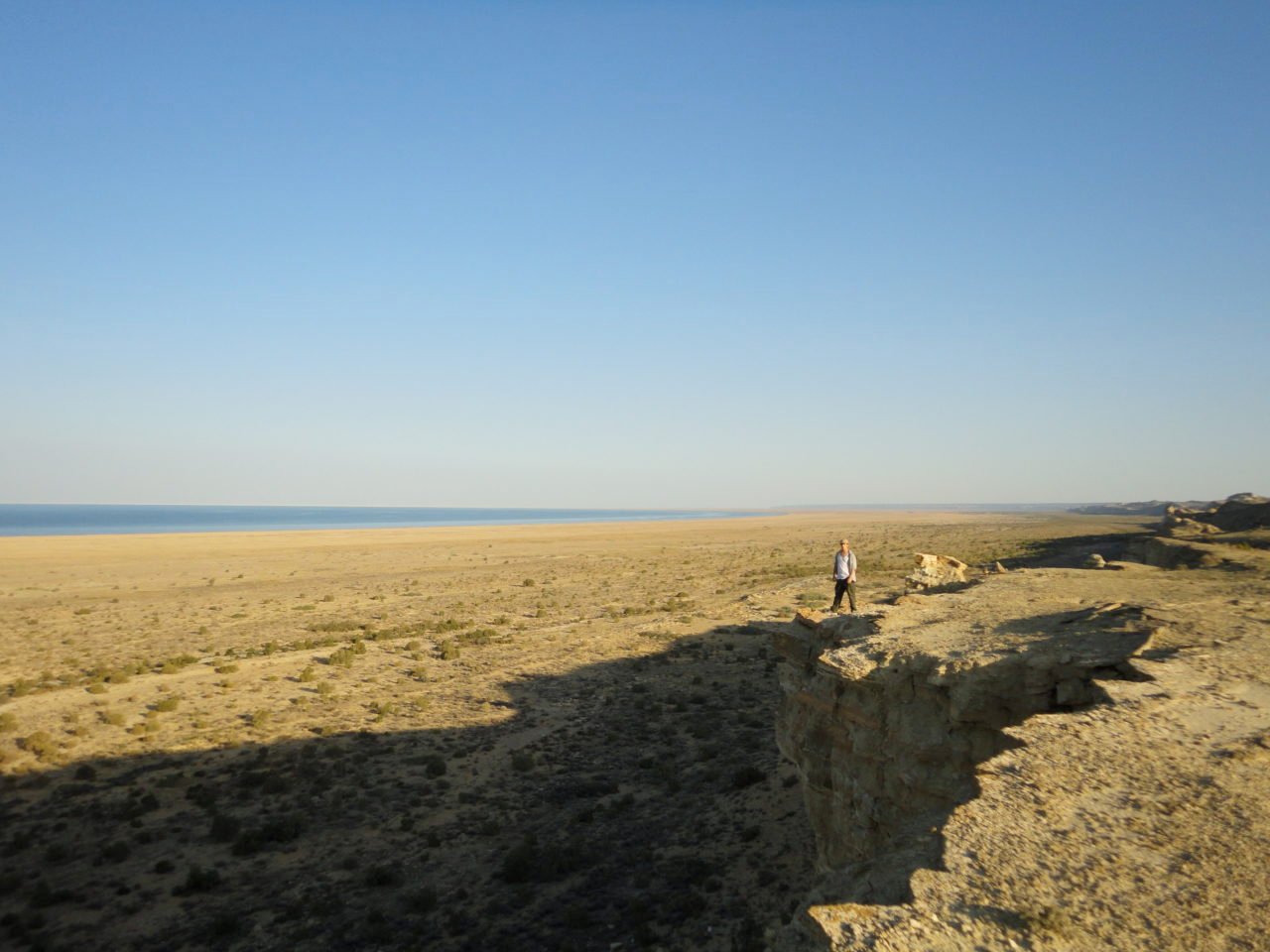Aral Sea Excursion, Uzbekistan
Seb Fish, November 6, 2011

For those who relish the more unusual and obscure adventure trips, a visit to the shrinking Aral Sea is well worth the journey. Labelled as the ‘biggest man-made disaster’ in history, it is easy to question anyone’s motives for visiting such a remote and, during the summer, intensely hot place. However there is a strangely fascinating appeal with exploring such an open expanse of apparent nothingness. Nowhere else in the world can you drive for 5 hours straight along a seabed that, only 50 years ago, held over 100 species in a body of water the size of Lake Ontario.
The rusty hulks of former fishing boats lie on sand dunes next to what was once a busy fishing port. It is now almost 200km away from the shore. A ferry from Moynaq, Uzbekistan used to ship passengers across what was once one of the biggest lakes in the world to Aralsk, Kazakhstan.

However, after braving 40 degree heat and a 7 hour bumpy car ride with our charismatic Russian driver, Viktor, we finally arrived at the shore of the South Aral Sea; one of three bodies of water the receding sea has split into.
It was strangely beautiful. It exploded out of the horizon and took us by surprise given the amount of lifeless, orange desert we had been speeding across during the day.
And why travel all this way to just look at it? Of course you need to go for a swim! Similar to the Dead Sea of Jordan, you are able float around with no effort. The salinity has killed off most of the sea life and deposits of salt are strewn around the sea shores.
One can read as much material about environmental conservation as one would like, but to see a disaster such as the Aral Sea, to see how the landscape has mutated, the life fading away from what must have been a beautiful part of Central Asia, is shocking.
There is no better lesson than to see the effects of absent mindedness in full force and it certainly strengthens your resolve to ensure a catastrophe of this magnitude may never happen again.

With the various Central Asian dictators showing little commitment or interest to revive anything out of the worsening situation, it seems clear that the Aral Sea is doomed to become a historical case study of how not to look after our planet. We can only look forward to future challenges of the 21st century such as climate change and ensure that mistakes such as the Aral Sea disaster are not repeated on a global level.
The Aral Sea may be a lost cause, but whether its loss will be enough to rouse the enthusiasm of world leaders to take a serious and dedicated approach to the sustainability of our planet, we will just have to wait and see.
How to plan this trip!
- Uzbek VISA. This can easily be organised through an accredited tour agency. Magnetic Junction recommends Stantours, who were flawless throughout an 8 week trip through Central Asia. For a more DIY approach, The Visa Machine (London-based) can also help to arrange Uzbek VISAs.
- Get there. You can transit via the capital (Tashkent) to Nukus (the city where Aral Sea excursions depart from) domestically on Uzbekistan Airways, or take a 20 hour direct train. It is recommended splitting the journey up by visiting the famous Silk Road towns of Samarkand and Bukhara en route.
- Clothes. Depending on the season, you may need clothes suiting very hot or cold conditions. It is usually very dry and good, comfortable trekking shoes are recommended. Uzbekistan is technically an Islamic country but it is very secular and women and men should feel free to dress as they want. Sun screen is very important at all times when outside in Uzbekistan during the summer.
- Tour operator. The tourism infrastructure in this part of Uzbekistan is very underdeveloped and as such, a lot of the tours are best organised on arrival. The Central Asia Lonely Planet Guidebook is essential for this part of the world and it contains a wealth of information about the country, the language and its transport and accommodation options. I contacted a very friendly, English speaking tour operator named Oktyabr Dospanov: oktyabrd@gmail.com
- Price. Two day excursion (to/from Nukus, 750km total). $470 for the car. $100 for the driver/guide. Tent and sleeping bag rental is $10/person and all of the meals for those two days (4 meals) is $30/person. Splitting this between 3-5 people means it becomes a very affordable trip. If you are in a small group it is possible to find others to share the costs of the excursion, just write on the Lonely Planet Thorn Tree forum.